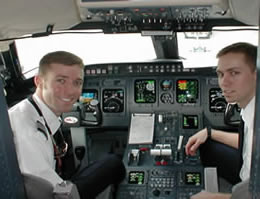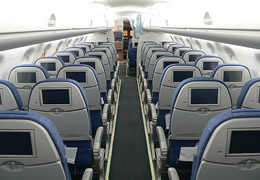AVIATION AIRLINE JOBS
AEROSPACE CAREER OPPORTUNITIES
FAA AVIATION JOBS - AIRCRAFT MECHANIC TECHNICIAN JOBS
FLIGHT CREW JOBS - FLIGHT ATTENDANT JOBS - AVIONICS JOBS
COMMERCIAL AIRLINE AND AIRCRAFT PILOT FLIGHT JOBS
 |
 |
 |
 |
HERE YOU WILL FIND THESE JOB CATEGORIES...
Aviation Careers
Aviation Jobs
Aircraft Maintenance Jobs
Technician
Jobs
Maintenance ManagerJobs
Maintenance Jobs
Technician Jobs
Dispatcher Jobs
Mechanic
Machinist Jobs
Private Pilot Jobs
Commercial Pilot Jobs
Flight Attendant Jobs
And MORE!!!!
FAA GOVT JOB OPPORTUNITIES
About FAA Occupations
Employment Information |
Flight attendants look after the safety and comfort of aircraft passengers and aircraft cabin crew. A flight attendant may perform the following tasks:
Flight attendants work in shifts which involve irregular hours, working weekends and public holidays, and spending time away from home. They work long hours in a pressurised cabin and must adjust to varying climatic conditions and different time zones. Uniforms are provided. Personal Requirements:
|
MORE AVIATION AND AEROSPACE RELATED JOBS... Aircraft Maintenance Technician, as used in the United States, refers to an individual who holds a Mechanic certificate issued by the Federal Aviation Administration; the rules for certification, and for certificate-holders, are detailed in Subpart D of Part 65 of the Federal Aviation Regulations (FAR's), which are part of Title 14 of the Code of Federal Regulations. Aircraft Maintenance Technicians (AMT's) inspect and perform or supervise maintenance, preventive maintenance, and alteration of aircraft and aircraft systems. In the U.S., Aircraft Maintenance Technicians usually refer to themselves as A&P's, for Airframe and Powerplant Mechanics. A Commercial Pilot License (CPL) or, in the United States, a Commercial Pilot Certificate, is a qualification that permits the holder to act as the pilot of an aircraft for hire. The basic requirements to obtain the certificate and the privileges it confers are agreed internationally by International Civil Aviation Organization, ICAO, however the actual implementation varies quite widely from country to country. According to ICAO, to be eligible for a Commercial Pilot Certificate, the applicant must already hold a Private Pilot certificate, have received training in the areas of a Commercial Pilot, and successfully complete a written exam. Upon completing those prerequisites the applicant will then receive an exam from the governing aviation body that consists of an Oral and Practical flight test from an Examiner. Different types of Commercial Pilot Certificates/Licenses are issued for the major categories of aircraft: Airplanes, helicopters, gyro-planes, balloons, and airships. A Certificate/License will contain a number of sub-qualifications or ratings. These specify in more detail the actual privileges of the license, including the types of aircraft that can be flown, whether flight under Instrument Flight Rules is allowed, and whether instructing and examining of trainee pilots can be done. Aerospace engineering is the branch of engineering behind the design, construction and science of aircraft and spacecraft. It is broken into two major and overlapping branches: aeronautical engineering and astronautical engineering. The former deals with craft that stay within Earth's atmosphere, and the latter deals with craft that operate outside of Earth's atmosphere. While aeronautical engineering was the original term, the broader "aerospace" has superseded it in usage, as flight technology advanced to include craft operating in outer space. Aerospace engineering, particularly the astronautics branch, is often informally called rocket science. # Fluid mechanics - the study of fluid flow around objects. Specifically aerodynamics concerning the flow of air over bodies such as wings or through objects such as wind tunnels (see also lift and aeronautics). # Astrodynamics - the study of orbital mechanics including prediction of orbital elements when given a select few variables. While few schools in the United States teach this at the undergraduate level, several have graduate programs covering this topic (usually in conjunction with the Physics department of said college or university). # Statics and Dynamics (engineering mechanics) - the study of movement, forces, moments in mechanical systems. # Mathematics - in particular, calculus, differential equations, and linear algebra. # Electrotechnology - the study of electronics within engineering. # Propulsion - the energy to move a vehicle through the air (or in outer space) is provided by internal combustion engines, jet engines and turbomachinery, or rockets (see also propeller and spacecraft propulsion). A more recent addition to this module is electric propulsion and ion propulsion. # Control engineering - the study of mathematical modeling of the dynamic behavior of systems and designing them, usually using feedback signals, so that their dynamic behavior is desirable (stable, without large excursions, with minimum error). This applies to the dynamic behavior of aircraft, spacecraft, propulsion systems, and subsystems that exist on aerospace vehicles. # Aircraft structures - design of the physical configuration of the craft to withstand the forces encountered during flight. Aerospace engineering aims to keep structures lightweight. # Materials science - related to structures, aerospace engineering also studies the materials of which the aerospace structures are to be built. New materials with very specific properties are invented, or existing ones are modified to improve their performance. # Solid mechanics - Closely related to material science is solid mechanics which deals with stress and strain analysis of the components of the vehicle. Nowadays there are several Finite Element programs such as MSC Patran/Nastran which aid engineers in the analytical process. # Aeroelasticity - the interaction of aerodynamic forces and structural flexibility, potentially causing flutter, divergence, etc. # Avionics - the design and programming of computer systems on board an aircraft or spacecraft and the simulation of systems. # Risk and reliability - the study of risk and reliability assessment techniques and the mathematics involved in the quantitative methods. # Noise control - the study of the mechanics of sound transfer. |
© AviationExplorer.com - The Website For Aviation Enthusiasts |




